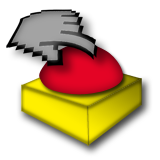Graphic Abstraction Level in Model UI Fragment Properties@0.0.4
Contents
FragmentProperty: Graphic Abstraction LevelStatus: EXPERIMENTAL
Documentation
The graphic abstraction level describes the level of realism of the entity representation. Corresponding to the realism also the visual complexity, and thus, effort for human processing rises if there is specific information to be gained from these representations. This property explicitly does not cover textual content of the fragment like process value representations or contextual annotations. However, if the presented text is part of the real physical object's appearance, the display of this text adds to the classification of the graphic abstraction level. This property is mainly relevant to visual modalities, corresponding properties for other modalities are yet to be defined.
Typed Element: → 'GraphicAbstractionLevelType'
Instanciatable Types 1
Name: → 'GraphicAbstractionLevelType' Status: EXPERIMENTAL
Base Type: STRING
Abstract: No
Cardinality: 0..1
From Model: UI Fragment Properties
Documentation: The graphical abstraction level describes the complexity of visual information that adds onto the logical or structural information being displayed for the actual purpose of the representation. This does not cover textual representations despite also using the visual modality.
Base Type: STRING
Abstract: No
Cardinality: 0..1
From Model: UI Fragment Properties
Documentation: The graphical abstraction level describes the complexity of visual information that adds onto the logical or structural information being displayed for the actual purpose of the representation. This does not cover textual representations despite also using the visual modality.
Enumerated Type
Abstract = 0 An abstract representation does not provide any visual or graphical information that enables the interpretation of the meaning of the represented entities.Ideographic = 1 Ideographic representations make use of abstract geometrical shapes that may be specified in a classification standard in order to visualize the meaning, purpose, or functionality of the referred content entities.Pictographic = 2 A pictographic representation is still abstract, but however, tries to mimic the real appearance of the displayed entities by simple graphical means. The purpose of this representation is to enable users to correctly interprete the representation content without the necessity to learn abstract geometrical representations. However, the more graphical information is added, the more complex the representation gets and the correct interpretation of the representation may take longer and may also take more cognitive resources.Schematic = 3 A schematic view provides an overlay on top of entity representaiton that uses geometrical shapes to express information about the functionality and interrelation of the represented entities.Surface Model = 4 A surface model usually originates from a design tool that was used to create a physical model as well as the shape and structure of a product as it will later be created in reality. The surface model likely adds detailed visual information that might also be useful to identify the real devices or counterparts in the environment. However, the visual information also might cause the need to reduce the amount of content being displayed.Photorealistic Surface Model = 5 A photorealistic surface model has the same properties as an ordinary surface model, but it adds complex visual information that also takes the entities' environmental conditions, mainly the lighting, into account.Photographic = 6 Photographic representations show the content entities as constructed in reality.

